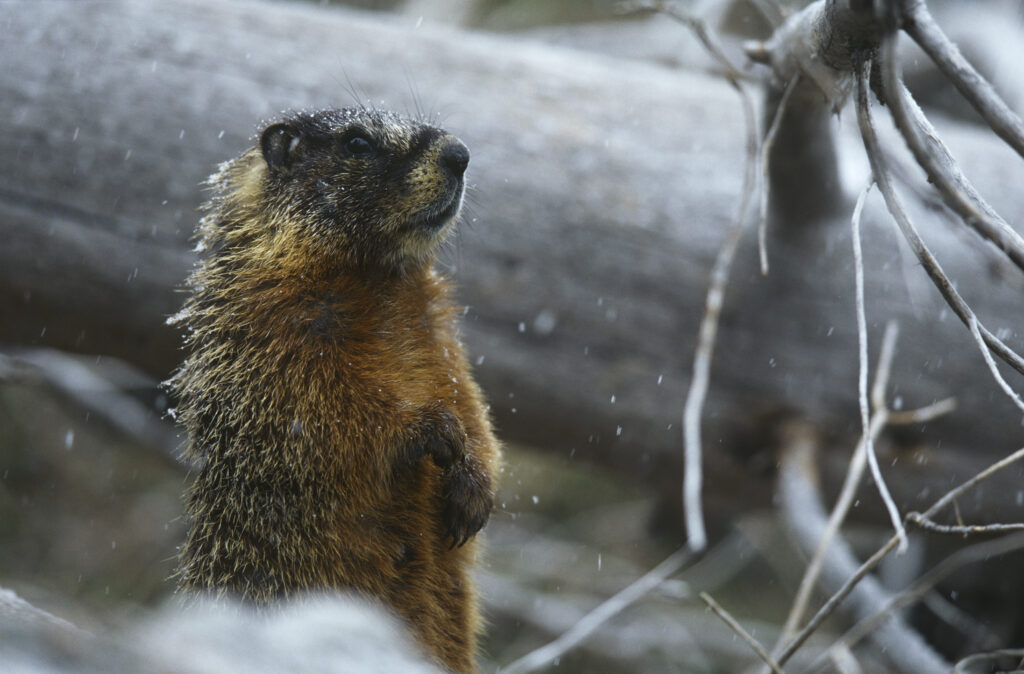Marmot Facts
Found in the western United States and Canada, ranging from the Sierra Nevada Mountains all the way up to Alberta, the yellow-bellied marmot is one of the more common rodent species found in North America.
They appear to be overgrown squirrels, and are also known as the “whistle pig” or the “rock chuck.” Marmots mate immediately after their hibernation period, usually in early spring. In the wild, marmots can live for up to 15 years. This rodent is a plant-eater that feasts on grasses, flowers, seeds, and nuts.

Marmot Damage
Aside from the fact that they may be eating your plants, marmots are not all that dangerous, preferring to lounge around all day instead of chasing you. As long as you leave them alone, they’ll leave you alone. This means, however that they may bite you if you try to feed them or disturb them.
The most dangerous thing about marmots is that they can carry a bunch of parasites and diseases like ticks that cause Lyme disease, or Rocky Mountain Spotted Fever (RMSF). It is also possible for them to transmit Hantavirus or rabies. These diseases can cause serious medical problems that cause anything from minor aches and pains to severe damage of the nervous and respiratory systems. If you do make contact with a marmot, it is best to seek medical attention to make sure you’re in the clear.
Marmot Life Cycle & Behavior
Marmots prefer warm, dry areas like deserts, clearings in forests, or areas in mountains beyond where trees grow. They are also fond of hilly, rocky environments that are perfect for burrowing when they are raising and protecting their young.
You’ll notice these large creatures emerging from their burrows in the early morning to sit out in the sun. They will then begin to look for food. Generally, they just love to lounge around and eat. Marmots that burrow together will often be seen playing with, or even grooming each other. Together marmots may also be more aggressive, chasing and fighting each other if they feel threatened. It’s possible to hear them whistle, scream, or chatter as they communicate with each other about predators, or possible threats. Because they are plant eaters, your flower and vegetable gardens may be damaged by these hungry rodents.
Types of Marmots
Marmot Identification
Marmots have stout bodies and wide heads. Marmots can grow to be 18 to 25 inches long. They are covered in thick, light brown hair, and have yellow patches on the sides of their neck, along with white spots between their eyes. These colors can vary, depending on the species
Marmots in the Home & Yard
It is possible to remove these lazy rodents through trapping, leaving plant bait to draw them in. You can then relocate them to another area that won’t be directly affected by their presence. Planting an alternate garden with clover or other sweet plants will keep the marmots away from the foods you and your family want to enjoy. Building a fence is also an option, but it must be high off the ground so the marmot can’t climb it, and it must be deep enough so the marmot can dig under it.
Frequently Asked Questions
What do marmot droppings look like?
Marmot droppings are dark brown or black and usually range from 3/8 inch to 1/2 inch in diameter. They are elongated and pointed at one end. They are mostly found scattered near their burrows or rocks.
What are the benefits of professional squirrel or wildlife pest control?
Expert pest specialists have the educational background, equipment, and skill to control and remove wildlife nuisances from a property in a safe, efficient way.
If you’re struggling with critters like marmots on your property, contact us. Our technicians can remove the rodents and help you regain control of your property and sanity.


